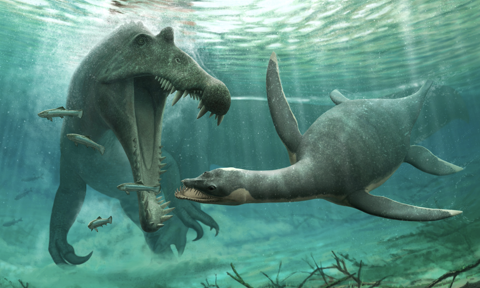
If you’ve spent even a minute on the conspiracy theories side of the Internet, you would be aware of the enduring myth of the Loch Ness Monster and its countless unverified sightings over the years.
While these are usually dismissed as a hoax, a recent discovery might add weight to the Loch Ness Monster Truthers’ claims.
MORE: A Hearbeat-Like Signal Was Detected In Deep Space
RESEARCH: An ‘Invisible’ Black Hole Is Lurking Outside Our Galaxy
In case you didn’t know, the mythical creature supposedly lives in Loch Ness in the Scottish Highlands and has a long neck with a small head. Invariably, any picture, or the rare video clip, is always blurry and so it’s always dismissed as an ordinary creature or item being mistaken for a mysterious creature.
In 1933, scientists suggested that the elusive creature could be the extinct aquatic dinosaur Plesiosaur, but these claims were also dismissed as it was known that Plesiosaurs were saltwater creatures and would not survive in freshwater, like the Loch Ness.
READ: The World Of Robots Is Getting Increasingly Weird
But scientists at the University of Bath and the University of Portsmouth in the UK, and the Universite of Hassan II in Morocco have discovered small Plesiosaur fossils in a 100 million-year-old river system that is now located in the Moroccan Sahara desert.
#Plesiosaurs were prehistoric reptiles with small heads, long necks, and four long flippers.
— University of Bath (@UniofBath) July 26, 2022
A new paper from researchers in @MilnerCentre suggests some species, traditionally thought to be sea creatures, may have lived in freshwater.https://t.co/w7UAQVlCf1pic.twitter.com/bAyac3JWD5
These fossils include teeth and bones from 3-meter-long adults and an arm bone from a 1.5m long baby Plesiosaur.
MORE: The Fastest-Growing Black Hole In The Universe
According to the researchers, this meant that Plesiosaurs were adapted to survive freshwater, as they apparently lived and fed in this river system alongside frogs, crocodiles, turtles, fish, and other aquatic dinosaurs like the Spinosaurus.
But if you got your hopes up about the Loch Ness Monster being real, the scientists have some grim news for you. While this makes the theory that Nessie, as it’s fondly called, could be real, it also suggests that it would have been extinct 66 million years ago alongside the rest of the dinosaurs. So there’s no chance that the ones spotted in the blurry photos and videos are the real thing.
Now that Nessie is quite definitely a bust, maybe now’s the time to shift focus on the UFO sightings?





